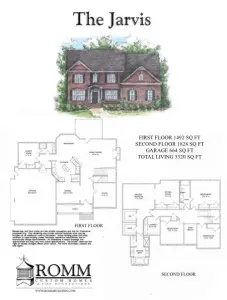
For many, building a new home is still the American Dream.
While some may argue, I strongly believe owning your own home offers a sense of stability, accomplishment and arrival…and owning a NEW home, even more so. Any time a builder hands you a set of keys and you walk through YOUR door into YOUR foyer for the first time is a pretty powerful moment.
That said, with so many options and decisions to be made along the way, the stress associated with building can be overwhelming and having a experienced counselor or advocate to help navigate the process is prudent. Having been in the real estate business since the early 1990’s means I have gone through the new home building process many times…as agent, client and even as a builder. Needless to say, the points made below come from experience, both personal and observational, and I like to think I have a deep reservoir to draw from.
Points to Consider
So what would I like to convey in this post? A lot…
Below is a list of several key points to keep in mind when considering the building process. While this list could be significantly longer, here are a few of the ones I feel are most important:
- build with a purpose in mind
- know neighborhood norms
- spend a ton of time on lot selection
- beware the builder’s ‘Selection Center’
- know your builder’s reputation
- understand cost vs value
We will expand on some of these points in more detail in a series of posts about new home building.
Build with a Purpose in Mind
We commonly ask people ‘is this the house you are going to die in?’ It sounds morbid, but what we are really asking is whether or not you will ever have to sell it.
If you feel you will be in the home for the rest of your life, then build what you want. You can put in his and hers platinum bidets and build the showroom dedicated solely to your antique Bolivian stuffed animal collection without having to worry about resale down the road. In effect, the longer the time horizon of ownership, the more liberal you can be with your decision making.

Since few of us are in a such a position, build with an eye to the investment aspects of the home. Treat each choice as a business or investment decision. If you are building a home to take you through the next 10 years of your life, build accordingly. If you are building within a neighborhood of older homes, choose a design which is consistent in style and scale with the surrounding homes. If you are building a home to take you well into your golden years, build a home with flexible interior mobility in mind.
If you know what you are trying to accomplish by building, decision making becomes far easier.
Know Neighborhood Norms
If 90% of the homes in the neighborhood have vinyl siding and laminate tops, do not build a brick front and install granite tops. If you are in a neighborhood with colonial styled homes, then don’t freelance and build a contemporary home. Likewise, if you choose the 3400 SF home in the 2400 SF neighborhood, your ‘per square foot’ value will be limited.

The adage about big fish/small pond (at least in real estate) is not necessarily a good thing. Being a little nicer (or bigger) than the norm is probably okay, but when you are 10% or more than the average within your neighborhood, you are approaching a danger zone. (You can read about our study on new versus resale home pricing here.)
Lot Selection is Key
One of the best agents I know (Sarah Jarvis!) drives this point home with her building clients. Buyers tend to focus on the home and less on the lot…which is a mistake. Anyone thinking of building a home should spend a great deal of time on selecting a great lot.

Remember, the only thing that cannot be duplicated in your home is land upon which it sits. Siding colors, kitchen cabinets, floor plans, deck sizes…all of these items can replicated. A lot is unique (at least in theory) and so many external factors can impact the lot value going forward.
Builders (and developers) often assign ‘lot premiums’ for the lots they feel have more value and I have always felt they get it wrong more than they get it right. It is an opportunity for a shrewd buyer (and agent) to find hidden value. So much goes into a good lot…privacy, orientation, buffer, street layout, future development, drainage, utilities, RPA’s, BMP’s and a host of other factors. Google maps and county websites make this easier than before, but thoroughly vet your lot selection.
Beware the Selection Center

Depending on your builder’s size and skill, they may have the dreaded ‘Selection Center.’
The Selection Center is where you go to choose all of the extra bells and whistles you can have in your new home. For new home buyers, it is akin to being an 8 year old at Disney World on Christmas morning who just won the Powerball.
So while you head to the selection center to make many choices (mostly colors of flooring and designs of kitchens), you often times end up finding out what you are NOT getting in the standard package that you thought you were getting (‘But the model had the soft close drawers and central vacuum!!’) Generally speaking, the larger builders will sell the home at a base price and with the goal of increasing your price anywhere from 10-25% at the selection center. Just know that the ‘Design Specialist’ who is there to assist you is pretty skilled at getting you to upgrade.
How you sequence negotiations from the onset can help eliminate the risk of being sold every bell and whistle at your selection session so prepare accordingly. Remember, the fewer decisions you have to make on the builder’s turf (selection center) the better off you will be.
Know Your Builder’s Reputation

The internet has made researching a builder far easier…spend time on it (see this set of reviews, for example)
You will never find a builder with a perfect reputation but you will find many are far better than others. Many sites exist with reviews of every aspect of a builder’s processes from material quality to customer service to repair request responses. Understand a builder’s strengths and it will help you achieve a better outcome.
Additionally, I believe that the most powerful way of judging builder quality is to find 5-10 year old homes constructed by the same builder and visit them as ultimately, time reveals flaws. MLS and/or tax records will allow you to search prior owners and ask your Realtor for a list of previous sales roughly 10 years old.
Understand Cost Versus Value
Builders price items based on cost but the market judges items in terms of value…and they are almost never the same. The key in home building is to avoid things whose cost is greater than their value and to build things whose value is greater than their cost.
An experienced agent will have a sense of whether or not a certain feature will add value. Lighting, for example can add panache and impact for a relatively small cost while exotic hardwood floors can be extremely pricy and while interesting, probably do not provide a great cost/benefit ratio. Likewise, the more expensive an upgrade is, the more universally accepted it needs to be. Unique granites and tiles are expensive to install and even more so to change.
Lean on your agent for guidance on the value of upgrades. It is ultimately your decision, but strive to make an informed one.
Summary
Overall, many ways to maximize your new home’s value while minimizing the risk associated with building exist. The items above only scratch the surface.
We go into far greater detail about many different aspects of home building in the series of posts you can find here...





